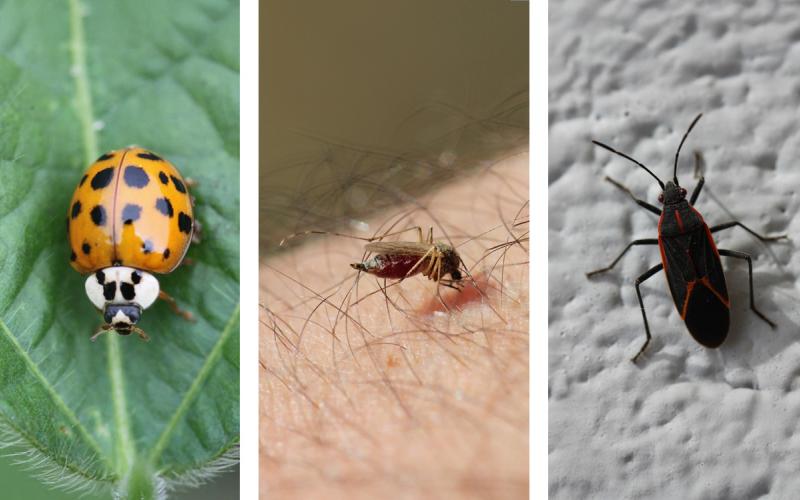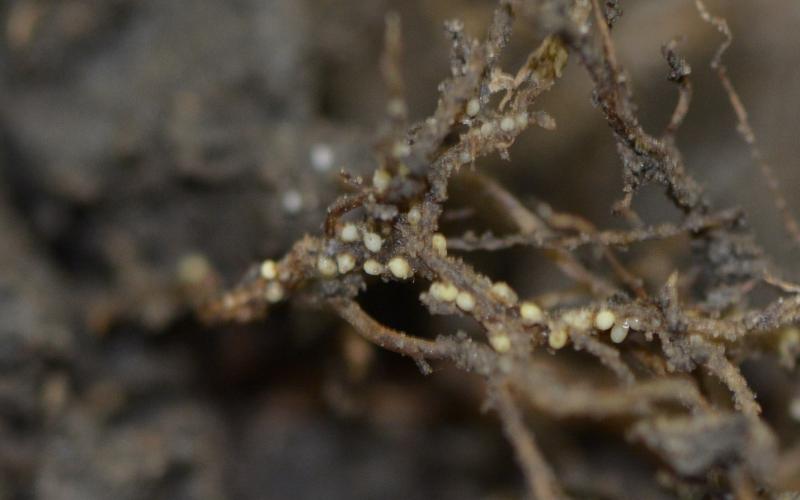
Written with contributions by Shelby Pritchard, former SDSU Extension Pest Management Specialist.
Originally Submitted: April 21, 2022
Bean leaf beetle emergence is approaching, so it’s important to start thinking about this pest. Once soybean begin emerging, the overwintering population of bean leaf beetle adults will move into soybean fields and begin feeding on the seedlings. This overwintering generation is capable of causing serious defoliation injury, especially when large populations successfully overwinter (Figure 1). However, the population density of overwintering bean leaf beetles is negatively affected when winter air temperatures get too cold. Knowing the number of days that the air was cold enough for bean leaf beetle mortality allows us to estimate the emerging populations in the spring. The first step in calculating bean leaf beetle mortality is recording the air temperatures that drop below 14 °F (-10 °C). At such temperatures, bean leaf beetle adults freeze and subsequently die. Although the adults can survive cold temperatures by hiding under plant debris and loose soil, especially in wooded areas, they cannot survive sustained sub-zero temperatures.
Lam and Pedigo (2000) developed a survival model for the bean leaf beetle to predict overwintering population mortality. This model functions by accounting for the accumulation of sub-freezing temperatures (14 °F or colder), and the known response of overwintering bean leaf beetles in both exposed (under crop residue in a field) and protected (residue in wooded areas) environments.

Using this model, the predicted mortality rates for the 2021-2022 overwintering bean leaf beetle populations in eastern South Dakota ranged from 98-100% (Figure 2). Although mortality was high at several locations, there is still the potential for bean leaf beetles to emerge in those areas if they had adequate snow cover during the cold temperatures. Areas that had snow cover or crop residue present during weeks with sub-zero temperatures still have a possibility of experiencing early-season bean leaf beetle populations.
Based on the 2022 bean leaf beetle mortality prediction, bean leaf beetle populations should be low across eastern South Dakota. Nevertheless, we still recommend early-season scouting for activity. Scouting should begin at soybean emergence and continue through the early vegetative stages. The overwintering generation of bean leaf beetles can be effectively managed by using insecticide seed treatments at planting in areas with historic bean leaf beetle pressure or foliar insecticides when populations become active in soybean. View the latest South Dakota Pest Management Guide – Soybean for a list of seed treatments and foliar insecticides that are labeled for bean leaf beetle management in South Dakota.


